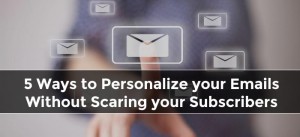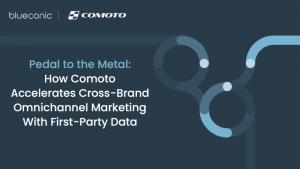
As a marketer, one of your top priorities should always be improving your conversion rates. Ideally, you already have a concept of your marketing funnel, which means you have an accurate understanding of how many of your website visitors are converting into leads, and how many of those leads are converting into customers.
Of course, there are many different elements of your marketing strategy that work toward improving these conversion rates, such as:
- Creating compelling blog posts that attract readers to your site;
- Putting in place a strong social media marketing strategy to drive interest in your content, product, and other offers; and
- Using email nurturing to educate your leads about your business and ultimately convert them into customers.
Your website is the hub of all your marketing activity, and it works in tandem with all of your other marketing channels. You should use your website as your ultimate conversion tool.
But how do you do that, exactly? And more importantly, if you’re looking at your metrics and you know that your website isn’t converting enough visitors to leads or enough leads to customers, what can you do to improve those conversion rates?
Here are 7 questions to ask yourself to help you figure out why your website isn’t converting as well as it could be.
Note: Before you begin optimizing your website for better conversion rates, make sure you have the appropriate analytics in place to be able to measure your efforts. Using a tool like Google Analytics or HubSpot will help you track changes in page views and submission rates, and allow you to attribute each new customer to the source that brought them to your website.
Why Isn’t Your Website Converting? Ask Yourself These 7 Questions
- Does every page of my website include a clear call-to-action?
Let’s begin with a very critical, yet often overlooked, component of a strong website: the call-to-action. In order to convert your visitors, or get them to do anything for that matter, you need to present them with an opportunity to do so.
If your goal is to get your website visitors to start a free trial of your product, but there’s no obvious call-to-action to start a free trial, how do you expect your visitors to sign up?
There should be a call-to-action on every page of your website – whether it’s a button, a link, a form to fill out – every page of your website should be working toward some goal.
Here are some examples of matching a page with an appropriate call-to-action:
- Homepage → Learn More
- Product Page → Start a Free Trial; Request a Demo; Buy Now
- About Us → Join Our Team; Contact Us
- Landing Page → Download this Free Ebook
Do a quick audit of your site, and click around on a bunch of different pages (don’t skip any of the main ones). Do you have a clear and obvious call-to-action on every page? If not, ask yourself, what is the goal of this specific page? Then include a call-to-action to keep your viewer moving toward that goal.
- Does my navigation make it easy for viewers to find what they’re looking for?
Oftentimes, your website visitors are looking to learn more about your business before they’ll convert to a lead or customer. As they go through this discovery process, they’re likely to have questions they’ll look for answers to, whether a specific detail about your product, or simply “how do I learn more” or “where do I sign up?”
By having a clear and well-designed navigation, you provide your viewers with a roadmap to your website. They can either follow along with the order in which you’ve structured your site, which helps tell a certain story and lead them through that conversion process, or if they have a specific question or need, they can navigate to the appropriate page.
One of my former freelance clients runs a website for a series of schools, and his goal was to get parents of prospective students to sign up for an info session. However, the sign-up form for the info sessions was hidden under the “Contact Us” page, and there was no call-to-action or link to that section from any other pages on the site. In other words, he basically had to hope that the website visitors would happen to click on the “Contact Us” page in order to even realize that signing up for an info session was a possibility!
Including this within the website navigation and creating a call-to-action on the homepage to sign up for an info session has made it much easier for my client to to convert more visitors into leads.
- Am I creating content that’s relevant, useful, and interesting to my audience?
When it comes to converting visitors into leads, content marketing plays a key role. Why? Because by providing your audience with content that helps them meet their needs (performing better in their job role, learning a new skill, understanding a specific concept, etc.), you build trust and appreciation.
If you’re producing this type of content – and always keep in mind the 3 words you should be aiming for: relevant, useful, and interesting – your website visitors will be willing to offer their contact information in exchange for that content, meaning you’ll be able to generate new leads.
If you’re not creating content at all, now’s the time to start! If you are creating content, and your landing page conversion rates are low, one of the possible reasons may be a lack of fit between your content and your audience. Look at your analytics to see which landing pages have the highest submission rates, which content gets the most engagement on social media, and which content promotions in your email sends have performed best to get a sense of what types of content your audience responds to best.
- Have I tested form length, headlines, copy, images, and other elements of my landing pages?
It may also be the case that your choice of content topics are spot on, but your landing pages themselves are not optimized for conversion. You should be constantly running A/B tests on your landing pages to test new headlines, body copy, images, formatting, form length, and more. Effectively every element of your landing page should be tested, so you can keep making strides toward a higher conversion rate.
If you’ve never run landing page A/B tests before, here’s a guide to get started. If you’ve run some in the past or you’re running a few currently, dig in deeper and find elements you haven’t tested yet, or try yet another headline or embed a different video. There’s always more to test!
- Is my product or service clearly explained?
Let’s shift focus now to converting your leads into customers. Think about the process you go through before you purchase something online or sign up for a new service. You likely visit that company’s website to learn more about their product or service first, right?
Well that’s exactly what your website visitors are doing, and if your website doesn’t make it extremely clear what it is that you’re offering and the benefits of buying or signing up for it, you’re simply not going to be able to convert as many new customers.
Pretend you’ve never heard of your company before, and read through your website for the “first time” – or better yet, enlist the help of a friend or family member who doesn’t know much about your company or product. Is all the information that they need to understand your offer/product/service present on your website? What remains unclear? Use this insight to improve clarity and overall experience for your website visitors.
- Does it take more than 1 click for someone to express interest in talking with my sales team or becoming a customer?
If generating more customers and more revenue for your business is your ultimate goal, your website visitors (with only a few exceptions) should only ever be one click away from expressing interest in becoming a customer.
Whether they’re on your homepage, your product page, your contact us page, or anywhere else on your main site, there should always be a fairly obvious way for them to request to speak with your sales team, or, if they can purchase directly through your site, to browse your products.
Try including a call-to-action button in the top right corner of your site or at the bottom of each page to “Talk to Sales” or “Shop Now.” Chances are, this will help lift your customer conversion rates significantly.
Note: I mentioned there are a few exceptions for pages that don’t need to be one click away from customer conversion. An example would be a landing page for a content offer. Because the goal here is to get your viewers to download the content piece, not become a customer, it’s okay to keep the focus around filling out the form rather than buying your product. In fact, it’s often better to optimize around a single call-to-action rather than multiple.
- Is it obvious how someone can reach us?
Lastly, you may have folks who visit your website and are very interested in becoming a customer, but are stuck on a question they can’t find the answer to, or simply want to speak with someone before purchasing. This is okay! You should make it easy for these people to reach out to you.
Whether through a form on your Contact Us page, or simply displaying your company’s phone number on your homepage, be sure to present some way for your website viewers to contact you. You’d be surprised how many potential sales you might be missing out on otherwise!
Once you’ve walked through this list of questions, you should be in a better position to identify what’s holding you back from seeing the conversion rates you want, and implement some new initiatives to achieve those higher conversion rates. Now go ahead and get optimizing!
Digital & Social Articles on Business 2 Community(87)








